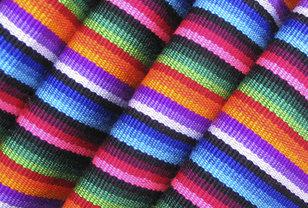 Natural fabrics come from naturally occurring fibers:
Natural fabrics come from naturally occurring fibers:
- plants such as cotton, hemp, nettle and flax;
- the hair of animals to make wool, alpaca, cashmere and mohair;
- silkworms that are used to create silk.
BUT only organic fabrics give assurance that all processes are done without the use of toxic chemicals. Natural fabrics must meet the standards set by the Organic Trade Association regarding fiber processing, production, dyeing and non-toxic handling in order to be labeled as organic. Look for organic certification on labels to ensure that the clothes you buy are actually organic. When you choose environmentally friendly clothes and textiles, you help to reduce the use of toxic chemicals, and in turn, protect your health and the health of the planet.
Natural fabrics from plants
Organic cotton
Cotton is one of the most important commodities in the world. The primary product manufactured from cotton is clothing. 99% of the cotton farmers live and work in developing countries where illiteracy is high and safety awareness is low, which keeps our clothes relatively cheep. On the other, each year, the world’s “dirtiest” crop is treated with US$2 billion’s worth chemicals – half of them are considered toxic. Thus, both the environment and lives of the farmers are put at risk.
Only a fraction of the world’s cotton is pesticide free, which means that the majority of the cotton we wear have contributed to the poisoning of lives and the environment in some of the most vulnerable parts of the world.
Whenever possible, try to buy organic cotton. Choose the shades it’s naturally grown in: cream, pale green, and light brown. Also look for credible labels indicating certified organic and environmentally friendly clothes.
Organic linen
True linen is made from flax, a plant that requires very little pesticides to be grown. Linen clothes are soft and get softer the more they are washed. Due to their little elasticity linen clothes wrinkle a lot, which is considered by some as part of the fabric’s particular “charm” – a sign of naturalness and luxury. Look for linen in natural shades, or dyed with natural dyes. Try to purchase linen that’s been made by an eco-certified clothing or fabric company. And, as usual, watch out for linen blends or cheap, chemically treated garments.
Organic bamboo
Bamboo grows rapidly (it is the fastest growing grass) and naturally without any pesticides, herbicides or fertilizers. Bamboo is anti-bacterial and anti-fungal due to a bacteriologic agent unique to bamboo plants called “bamboo kun”, which also helps bamboo resist harboring odors. Bamboo clothing is hypoallergenic. This natural fabric is more breathable and thermal regulating than cotton, hemp, wool or synthetic fabrics. In warm, humid and sweaty weather, bamboo clothing keeps the wearer drier, cooler and more comfortable and doesn’t stick to the skin.
The processes where the plant is transformed into fabric are where the bamboo loses its environmentally friendly status. It is often called bamboo rayon because of the similar heavy chemicals, some of which are toxic, that are used. Very little bamboo clothing would qualify as sustainable or organic.
Soy Fabric
This fabric is made by the hulls of soy beans – a food production waste. It is often called the “vegetable cashmere” due to its softness and silkiness. It makes a good option for underwear and bras. This natural fabric is easy to care for and absorbs dyes quickly, requiring less dye-stuffs. Make sure your soy fabric is certified organic and environmentally friendly. Check if you are not buying a “soy blend” that includes polyester and inorganic cotton in the mix.
Organic Hemp
Hemp is the most ecologically friendly plant, because it requires no chemicals to grow. It’s also extremely versatile, and can be used to create strong, sturdy fabrics (including rope), or soft, delicate items like comfy pajamas or soft nightgowns. Anything that can be made from cotton can be made from hemp.
Ramie
Ramie or “China grass” is one of the oldest fiber crops, which is known for 6 000 years. Unlike other bast fibers (flax, hemp, stinging nettle), ramie requires chemical processing to de-gum the fiber. Ramie fabrics are resistant to bacteria. They are very absorbent and comfortable to wear in warm weather. It is naturally stain resistant and does not shrink. Being naturally white in color, ramie fibers do not need bleaching.

